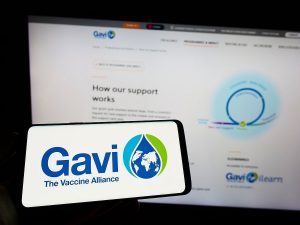Most working-age Americans get health insurance through their employer, but even they are finding it tougher to afford medical care these days, a new study shows.
Researchers found that over the past 20 years, a growing number of Americans with job-based health insurance have been skipping medical care due to costs. Women have been particularly hard-hit.
The study, published Dec. 27 in the Journal of the American Medical Association, could not get at the reasons. But experts said there are some likely explanations, including rising health care costs and moves by insurance plans to foist more payment responsibility onto consumers.
“The U.S. health care system is unique in how privatized it is,” said lead researcher Avni Gupta, a PhD student at the NYU School of Global Public Health in New York City.
About 61% of Americans younger than 65 get health insurance through their employer, and businesses use that benefit to help attract workers, Gupta pointed out.
“It’s the most important fringe benefit of employment,” she said.
But increasingly, the new findings show, that fringe benefit is falling short.
By 2020, the study found, about 6% of U.S. women with employer-sponsored insurance said they’d been forced to skip needed medical care in the past year due to costs. That was double the percentage 20 years before, at 3%.
The figures were lower among men, but followed the same pattern: In 2020, 3% skipped medical care because they couldn’t afford it — up from 2% in 2000.
Certain types of care were further out of reach than others, the study found — namely, mental health care and dental care.
Again, women were more affected than men. In 2020, around 6% said they could not afford needed mental health care, versus 2% just a few years before. Meanwhile, roughly 11% of women skipped dental care in 2020 due to costs — a near doubling from a few years prior.
The question is: Why are women facing more financial obstacles than men?
“Sex differences in health care affordability are understudied,” Gupta said. “This analysis is showing that we need to pay more attention to this.”
There are potential explanations, according to Sara Collins, vice president of health care coverage and access at the nonprofit Commonwealth Fund.
For one, Collins said, women see health care providers more often than men do — including for pregnancy — and health care costs overall have been rising.
Women also generally make less money than men, Collins said, which can make it harder to foot the bill for anything their health plan does not cover.
The findings are based on a nationally representative group of U.S. adults who took part in an annual federal health survey. Gupta’s team focused on more than 238,000 respondents who were between the ages of 19 and 64, and had insurance through their employer or union.
In general, the percentages of people reporting problems affording care were relatively small. But, Collins noted, respondents were also asked something specific: Did they skip needed care in the past year?
In a recent Commonwealth Fund survey, Collins and her colleagues found that 29% of Americans with employer-sponsored health coverage were “underinsured.” That meant their out-of-pocket costs for health care in the past year were at least 10% of their household income (or 5% for people living under the poverty line), or their health plan’s deductible was at least 5% of their household income.
The deductible is the amount people have to pay toward their care before the insurance coverage kicks in. In recent years, employers have been increasingly turning to high-deductible plans, in an effort to save money on monthly premiums. And that’s one likely reason that employees are having more trouble affording care now, Gupta and Collins said.
Typically, Collins noted, people do not realize how skimpy their health plan is until they face significant health issues.
“It’s when you’re the sickest that you pay the most,” she said.
The root of the problem, Collins said, is the ever-growing cost of health care services — which has far outpaced income growth, yet ultimately gets passed down to consumers.
That’s a huge issue to tackle, though. And in the meantime, Collins said, many Americans need some relief. That could include making it easier for employed people to enroll in an Affordable Care Act (“Obamacare”) plan, she said.
But, Collins added, “I do think insurance plans need to pay attention to their benefits design.”
Unfortunately, Gupta said, insurers have little incentive to do that. She thinks it will take action on the federal level.
More information
Families USA has a primer on health insurance basics.
SOURCES: Avni Gupta, BDS, MPH, doctoral student, public health policy and management, NYU School of Global Public Health, New York City; Sara Collins, PhD, vice president, health care coverage and access, Commonwealth Fund, New York City; Journal of the American Medical Association, Dec. 27, 2022
Source: HealthDay
Copyright © 2025 HealthDay. All rights reserved.

















